“Injection molding offers a transformative approach to producing a vast array of parts with precision and efficiency. It leverages sophisticated machinery to shape diverse parts & products, from everyday items to complex components for different industries.”
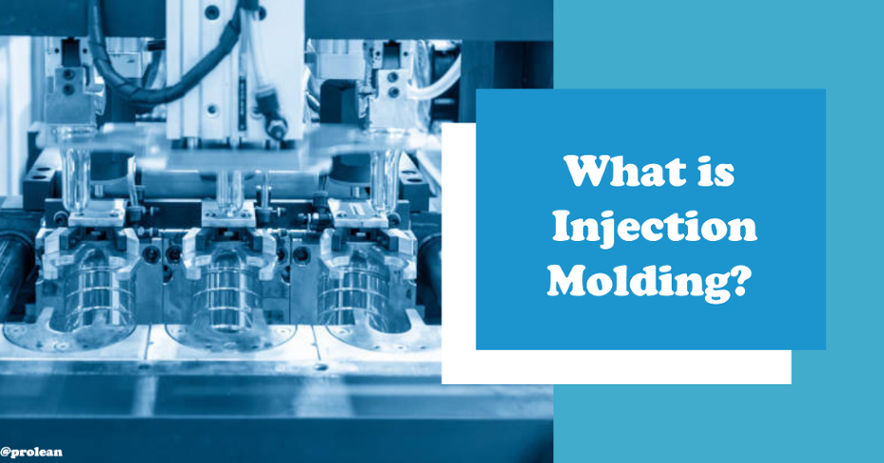
What is Injection molding? It is one of the most popular manufacturing processes to produce precise parts or products. It encompasses both plastic and metal, catering to various applications. The process involves melting raw materials and injecting them into a mold, which cools and solidifies into the final part. Once the mold is created, it enables mass production of parts with consistent quality and precision.
This article will explore the intricate details of injection molding, its processes, types, materials, injection molding cost considerations, applications, and more.
The Basics of Injection Molding
Injection molding is a widely used manufacturing process to produce a wide variety of plastic parts and metal components with high accuracy. This cost-effective approach involves both plastic and metal injection molding that is essential for mass production, enabling industries such as automotive, medical devices, and consumer electronics to create identical parts consistently. Injection molding involves melting raw material, such as plastic material or metal, and injecting it into a mold under high pressure. Once the injection mold is created, it enables mass production of identical parts with consistent quality and precision.
This article explores the injection molding process including its stages, types, materials, injection molding cost with real world case study.
Working Principle of Injection Molding
Injection molding revolves around melting raw material (typically plastic or metal) injected into a mold cavity under high pressure. The mold, often referred to as an injection mold, is precisely crafted to mirror the desired shape and size of the molded part. The material is injected through a heated barrel, where a reciprocating screw melts and pushes the molten material into the mold cavity. This process ensures that the material injected fills the mould cavity completely, even tiny holes, and thin features.
Injection molds can be complex, with multiple cavities and intricate designs, allowing for the production of precise parts. Once the material is injected, the molten material cools and solidifies, taking the shape of the mold. After cooling, the mold halves open, and the part is ejected using ejector pins, ensuring the molded part is removed without damage.
Four Stages of Injection Molding
The injection molding process consists of four key stages which include: Clamping, Injection, Cooling, and Ejection each a subsequent step that transforms raw material into complex parts. These stages ensure the process transforms raw material into injection molded parts with high precision.
1. Clamping
The first stage, clamping involves a clamping unit to securely close the mold to prevent material leakage during injection molding. This step is critical to maintain the molded part’s shape and integrity, ensuring the mold can withstand high-pressure injection.
2. Injection
During the injection stage, plastic material or metal in pellet or powder form is melted in the injection unit and forced into the mold cavity. Precise control of temperature and pressure ensures consistent part quality, making this a vital phase of the molding process.
3. Cooling
Once injected, the material inside the mold begins to cool and solidify, taking the shape of the mold. The cooling time allows the molten material to solidify within the mold to form the molded part. The duration depends on the material and wall thickness. The geometry affects the cooling time which significantly affects the quality of the plastic molded parts and metal components.
4. Ejection
Once cooled, the mold halves open, and ejector pins release the injection molded part. Careful ejection prevents damage, ensuring the part is ready for post-processing or assembly.
Related: 9 Best Injection Molding Materials
Try Prolean Now!
Structure and Components of Injection Molding Machine
Injection molding machines are complex devices designed to transform raw materials into molded parts through a precise, controlled molding process. They consist of two primary units: the injection unit and the clamping unit, each critical for transforming raw material into precise parts.
Injection Unit
The injection unit manages the melting and injection of the material. It includes:
- Hopper: The hopper is where the raw material (either plastic pellets or metal powder) is stored before feeding into the molding machine. It’s designed to allow a steady flow of material into the machine without clogging or spilling, ensuring a consistent supply for the molding process.
- Barrel and Screw: The barrel, equipped with heaters, melts the material fed from the hopper. Inside the barrel, a rotating screw not only aids in melting the material but also acts as a ram during the injection phase, pushing the molten material into the mold.
- Control System: The control system regulates the process parameters like temperature, pressure, injection speed, and clamping force. They ensure consistent quality and precision in the injection molding process and allow for fine-tuning to meet the specific requirements of different materials and molds.
Clamping Unit
The clamping unit secures the mold during injection and cooling. The clamping force must be sufficiently strong to resist the pressure of the injected material, so the mold remains closed and the part is accurately formed.
- Mold: The mold is custom-made from metal for each specific product. It consists of two halves – the cavity and the core – which close tightly during the injection process and open for part ejection.
- Ejection System: Once the part is cooled and solidified, the ejection system is activated. This system often includes pins or plates that push the finished part out of the mold, ensuring it is ejected without damage.
- Hydraulic and Electrical Systems: Hydraulic systems provide the force needed for the clamping and injection processes. Electric injection molding machines offer better energy efficiency lowering injeciton molding costs.
Step-by-step Injection Molding Process
The injection molding process is a series of careful steps, starting with selecting appropriate materials and designing the mold. It involves melting the material, injecting it into the mold, cooling, and solidifying, followed by ejection and post-processing to produce high-quality parts.
Step 1: Material Selection
Choosing the right injection molding material is critical, as it affects the molded part’s properties, such as chemical resistance, strength, and flexibility. Common plastics for injection molding include acrylonitrile butadiene styrene (ABS), polyethylene, and polypropylene, while metal injection molding uses materials like stainless steel or titanium.
Step 2: Injection Mold Design
The mold design is crafted using advanced CAD software to create an injection mold that mirrors the part’s specifications. The mold injection process relies on the precision of the mold cavity and core.
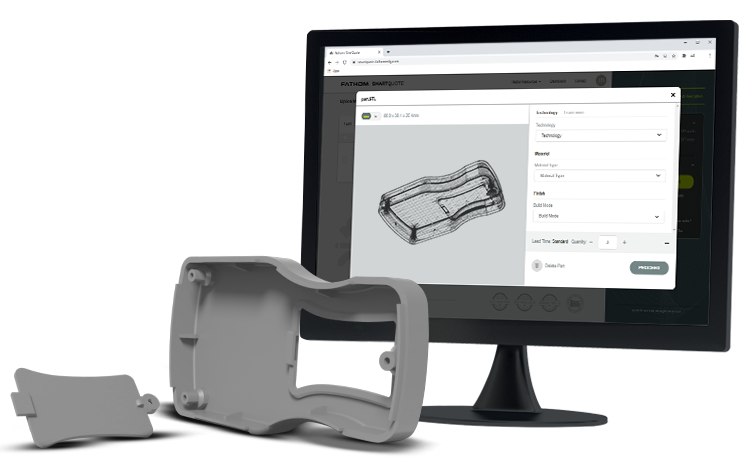
CAD design of Injection Mold
The quality and design intricacy of the mold determines the precision and quality of the molded parts. Furthermore, this stage often involves significant investment to ensure the mold finish is of the highest quality and the mold features are accurate.
Step 4: Mold Manufacturing
Molds are created using CNC machining and electrical discharge machining (EDM), to ensure durability and accuracy for the injection molding process.
Step 4: Melting the Material
For plastics injeciton molding, plastic pellets are fed into a heated barrel where they melt before injection. In metal injection molding, metal powders are mixed with a binding agent and heated until they reach a molten state. Precise temperature control ensures the molten material is ready for injection.
Step 4: Injection of molten material
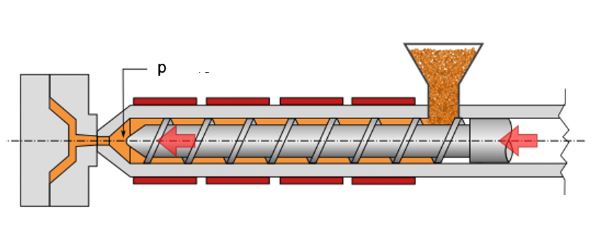
Injecting the molten material
The injection is a high-precision stage where the molten material is injected into the mold under significant pressure, commonly ranging between 70 and 112 MPa (10–16 Kpsi) in this process. Injection ensures the complete filling of the mold cavity, capturing the intricate details of the design. In this stage, it is crucial to maintain the correct pressure and volume of material. Any inaccuracies during injection can lead to defects in the final product, such as a warping or incomplete filling.
Step 5: Cooling and Solidification
Post-injection, the material within the mold begins to cool and solidify, a phase crucial for the product’s structural integrity. Material transforms from molten to solid form in this cooling period. The duration of this cooling process varies based on the material’s properties and the size of the part.
Cooling Time (Tc) = (K * V * ΔT) / Q . Source
Where Tc is Cooling time in seconds), V is the volume of the molded part, ΔT is the temperature difference between the melt temperature and the ejection temperature, Q is the cooling rate, and K is the constant depends on the material and mold properties.
Step 6: Ejection
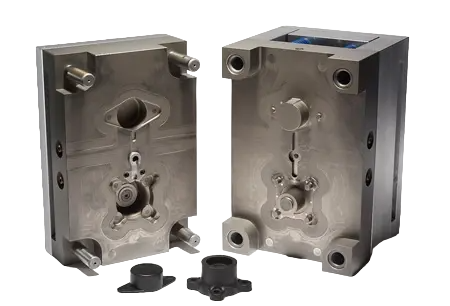
Parts ejection from the injection mold
After solidification, ejector pins release the injection molded part from the mold. In metal injection molding, additional steps like debinding and sintering are involved. Debinding removes the binding agent and sintering strengthens the part by heating it without melting.
Step 7: Post-Processing
The post-processing phase involves trimming excess material and applying finishing touches such as polishing or painting to enhance the plastic molded parts or metal components. For metal parts, this stage might include additional machining or heat treatments to enhance mechanical properties or to achieve finer tolerances and surface finishes.
Step 8: Quality Control
Quality control is a critical step to ensure it meets predetermined standards and specifications. This inspection might involve dimensional checks, material testing, and surface examination. Molded parts that fail to meet quality criteria are either reworked or discarded, maintaining the integrity of the production batch.
Step 9: Assembly and Packaging
In the final step, parts are assembled if they form a component of a larger product. Subsequently, they are packaged, often with protective materials to prevent damage during transportation.
Try Prolean Now!
What Are the Different Types of Injection Molding?
Injection molding, a versatile manufacturing process, adapts to various applications through its different types. Each type caters to specific requirements, ranging from the material used to the complexity of the product design. The diversity in injection molding types allows for diverse products, from simple household items to intricate automotive components.
Thin-Wall Injection Molding
Thin-wall injection molding specializes in producing thin-walled palstic parts while maintaining strength and durability. It’s widely used in creating lightweight, fast-production items like packaging materials and containers. The main challenge is ensuring these thin components retain structural integrity.

Thin-wall injection molding
Liquid Silicone Rubber Injection Molding
Liquid Silicone Rubber (LSR) injection molding creates flexible, durable, and thermally stable parts. It’s particularly suited for medical devices and cookware due to its durability and chemical resistance.
Cube Molding
Cube molding is an innovative injection molding technique that uses a rotating cube-shaped mold. This unique approach allows for simultaneous multi-material injection and more complex part designs. It’s particularly effective for high-volume production where efficiency and precision are paramount.
In cube molding, different sides of the cube can be used for various stages of the molding process. This reduces lead times and enhances efficiency for complex parts. In cube molding, while one side is in the injection molding stage, the other side of the cube can have a part in the ejection stage, making the process more efficient.
Gas-Assisted Injection Molding
Gas-assisted injection molding is a technique where gas (usually nitrogen) is used to create hollow sections in plastic parts. This method is beneficial for reducing material use, minimizing warping, and enhancing the strength-to-weight ratio, especially in larger, complex parts.
The process is particularly valuable in manufacturing handles, panels, and other large parts where internal stability and surface finish are critical. It combines material efficiency with structural integrity, making it a sought-after method in various industries.
Micro Injection Molding
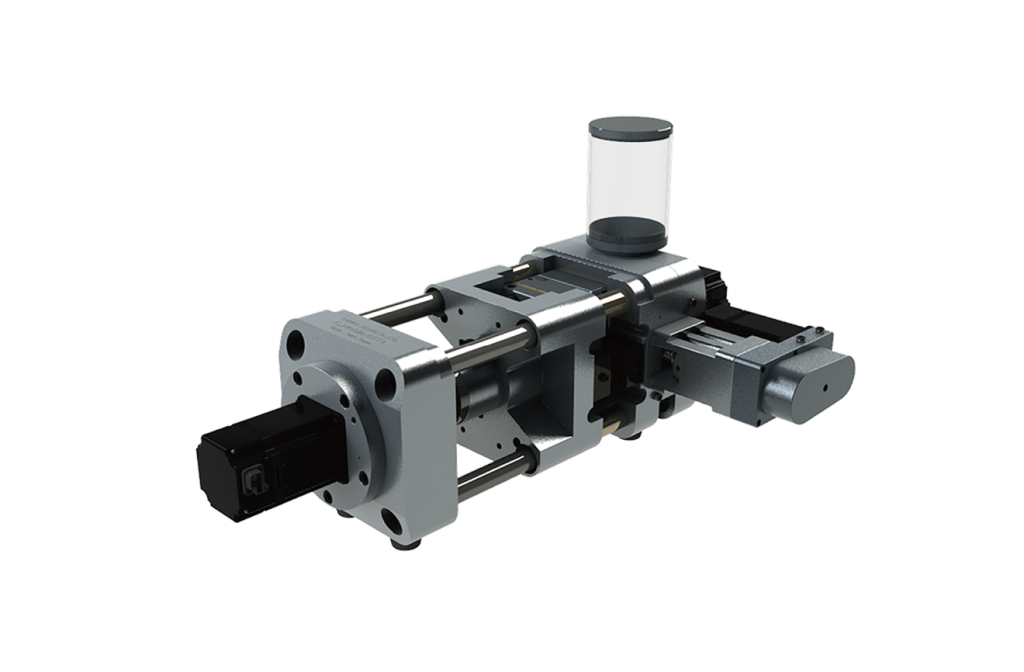
micro-injection molding machine
Micro injection molding caters to the production of extremely small, high-precision parts, commonly used in medical devices and electronics.
The challenge lies in consistently producing miniaturized components, where accuracy is important.
Overmolding
Overmolding is a process where a layer of material is molded over an existing part, enhancing grip or aesthetics in plastic injection molding products like consumer electronics.
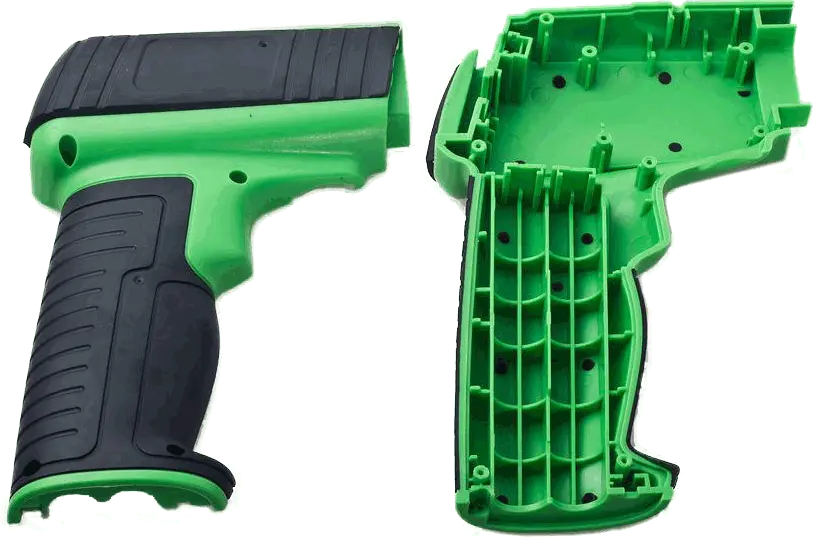
Overmolding
The second stage of over-molding often involves adding functional characteristics, such as improved grip or shock absorption, to an item. You can use this method for multi-textured or multi-material products, combining functionality with aesthetic appeal.
Read More:
- Transfer Molding: Definition, Process, and Applications
- Compression Molding: Type, Pros, Cons, and Uses
Plastic Injection Molding
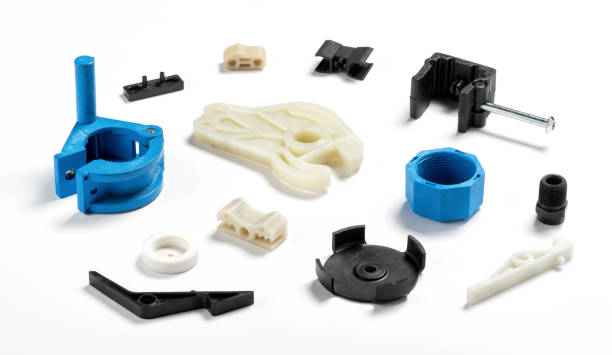
Plastic parts created with injection molding
Plastic injection molding is a commonly used manufacturing process for producing high-volume plastic parts. It involves melting plastic granules and injecting them into a mold to form a specific shape.
This method is highly efficient for mass production, allowing for the creation of intricate and consistent designs. It’s essential for industries ranging from automotive to consumer goods. The following are the common Plastic Injection Molding Materials
- Polyethylene (PE)
- Polypropylene (PP)
- Polystyrene (PS)
- Polyvinyl Chloride (PVC)
- Polyethylene Terephthalate (PET)
- Acrylonitrile Butadiene Styrene (ABS)
- Polycarbonate (PC)
- Polyamide (Nylon)
- Polybutylene Terephthalate (PBT)
- Acetal (POM)
- Polymethyl Methacrylate (PMMA)
- Thermoplastic Rubber (TPR)
- Thermoplastic Polyurethane (TPU)
- Polyphenylene Oxide (PPO)
- High Impact Polystyrene (HIPS)
Particular Considerations
Considering the melting temperature and flow properties of different plastics is crucial in plastic injection molding. It ensures the smooth filling of the mold and the quality of the final product.
Another consideration is the shrinkage rate of each plastic type. Adequate allowance for shrinkage must be factored into mold design to achieve accurate dimensions in the finished part.
Applications
Plastic injection molding is vital for manufacturing plastic parts like automotive dashboards, medical devices, and consumer goods such as toys and plastic molded products.
Related: ABS Injection Molding: A Guide to Achieving Plastic Products
Metal Injection Molding
Metal injection molding (MIM) is a process used to manufacture high-volume metal parts with complex geometries. It is known for its ability to produce strong & intricate parts used for small, complex components requiring high strength. It’s a cost-effective alternative to traditional metalworking techniques like machining and casting. The following are the Metal Injection Molding Materials;
- Stainless Steel
- Titanium
- Tungsten
- Nickel Alloys
- Cobalt Alloys
- Copper Alloys
- Iron-Nickel Alloys
Particular Considerations
The choice of metal powder affects the part’s final properties, such as strength and corrosion resistance. Binder removal and sintering conditions must be precisely controlled to achieve optimal part density and mechanical properties.

Injection molded metal parts
Applications
- Widely used in the medical sector for surgical tools and implants due to biocompatibility.
- Ideal for manufacturing complex parts in the aerospace industry, such as components for engines.
- In the automotive sector, it’s used for producing small, intricate components like gears and connectors.
- MIM is also prevalent in consumer electronics for manufacturing precise metal parts in gadgets.
Read More: CNC Milling for Metal Parts: Precision in Practice
Try Prolean Now!
Surface Finishing of Injection Molded Parts
Surface finishing of injection molded parts enhances their appearance and functionality. These finishes can range from aesthetic improvements to functional coatings that alter the part’s properties.
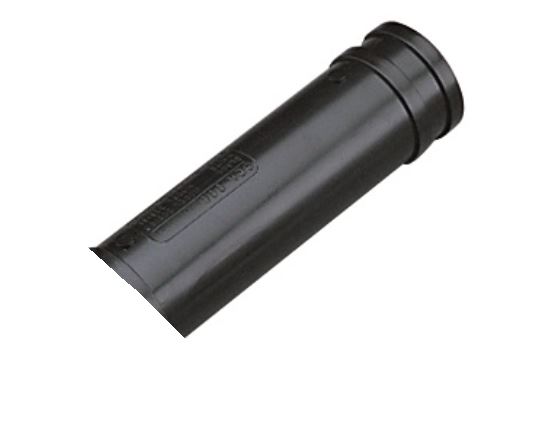
Finish on injection molded plastic part
Different techniques are used depending on the desired outcome and the material of the part. These finishes can provide improved durability, aesthetic appeal, or special features like UV resistance.
- Painting: Adds color enhances visual appeal and offers a protective layer against environmental factors.
- Plating: Applies a metal layer for aesthetics and wear resistance and is ideal for parts needing a metallic look; more expensive.
- Polishing: This creates a glossy, high-quality finish and removes surface imperfections for smoothness.
- Sandblasting: Achieves a matte texture by blasting the surface and preparing parts for further finishing, like painting.
- Laser Engraving: Adds detailed designs or text precisely and is ideal for permanent, wear-resistant markings.
Injection Molding Cost: Compared with Other Approaches
Injection molding is often considered for its cost-efficiency in mass production. While the initial setup and mold costs are high, cost per part significantly decreases with volume, making it cost effective for high volumes.
In contrast, 3D printing and CNC machining have different cost structures. 3D printing is more cost-effective for low-volume, complex designs due to minimal setup costs. CNC machining, while versatile, incurs higher costs in materials and labor, especially for complex parts or large quantities.
Table: Cost Comparison of Injection Molding, 3D Printing, and CNC Machining
| Aspect | Injection Molding | 3D Printing | CNC Machining |
| Cost Per Unit | Low in high volumes | Moderate | High in high volumes |
| Production Volume | Best for high-volume | Best for low to medium-volume | Best for low to medium-volume |
| Production Speed | Fast after setup | Slow | Moderate |
| Finish Quality | High | Varies | High |
Related: 3D Printing Vs. Injection Molding: Choose the Best Method for Your Project
What Are the Advantages of Injection Molding?
Injection molding is renowned for its efficiency in mass production. It enables the creation of large quantities of parts with consistent quality and precision, making it ideal for manufacturing on a grand scale.
This process also allows for high versatility in design and material selection. It’s capable of producing complex shapes that might be challenging or costly with other manufacturing methods.
Advantages
- High efficiency in mass production
- Consistent quality for identical parts
- Capability to produce complex shapes
- Wide range of molding materials
- Low cost for large production runs
- Reduced waste compared to traditional manufacturing
What Are the Applications of Injection Molding?
Injection molding’s versatility makes it a staple in various industries. From automotive to consumer goods, its applications are vast due to its ability to produce diverse part designs and complexities. In the medical field, injection molding is used for creating sterile, disposable items, while in the automotive industry, it is essential for producing durable, high-precision parts.
Table: Injection Molding Applications
| Industry | Applications |
| Automotive | Dashboards, bumpers, interior panels |
| Consumer Goods | Toys, household items, containers |
| Medical | Syringes, medical equipment components |
| Electronics | Encasements for smartphones, remote controls |
| Aerospace | Cabin components, structural elements |
Try Prolean Now!
China Injection Molding Services
China’s injection molding services are renowned for their cost-effectiveness and large-scale production capabilities for diverse industries globally. Chinese injection molding services can handle rapid production turnaround and high-volume orders.
Prolean Injection Molding Services: from Mold Creation to Surface Finish
We offer comprehensive injection molding services, ensuring quality from mold creation to the final surface finish.
Our Services include:
- Custom mold design and manufacturing
- Precision injection molding for plastics and metals
- Advanced quality control measures
- Post-molding operations like painting and polishing
- Rapid prototyping for design verification
- Large-scale production capability for high-volume orders
Read more:
- Why is CNC Machining Better than Injection Molding for Thermoplastic Prototyping?
- Injection Molding Gate: Expert Insights on Design & Manufacturing
Summing Up
Injection molding is a transformative technique in modern manufacturing, offering precision and efficiency in producing diverse parts. Different metal and plastic molded parts are crucial for various industries and applications. Its stages of clamping, injection, cooling, and ejection, allow for the mass production of intricate designs with consistent quality. It’s not just limited to standard processes but also includes specialized forms like thin-wall, liquid silicone rubber, and gas-assisted molding.
FAQs
What are the primary benefits of injection molding?
Injection molding offers cost-effective mass production, consistent part quality, and the ability to create complex shapes with high precision.
How does the design impact the injection molding process?
Injection mold design determines mold complexity, material choice, and production efficiency, directly affecting part quality.
How are advancements in technology influencing injection molding?
Technological advancements lead to more precise control, reduced waste, and the ability to mold complex designs. Innovations like 3D printing for mold making also streamline the process.
What are the cost considerations for starting an injection molding project?
Initial injection molding cost includes mold design and production, with material choice and part complexity impacting expenses. Volume production reduces cost per part.
What is splay in injection molding?
Splay appears as silver streaks or splashes on a molded part’s surface, usually caused by moisture in the material or excessive injection speed.
What is 2k injection molding?
2K injection molding combines two different materials or colors in a single molding process, enabling complex, molded parts.
Resources
- Huszar, M., Belblidia, F., Alston, S., Wlodarski, P., Arnold, C., Bould, D., & Sienz, J. (2016). The influence of flow and thermal properties on injection pressure and cooling time prediction. Applied Mathematical Modelling, 40(15-16), 7001-7011. https://doi.org/10.1016/j.apm.2016.03.002
- Fischer, J. M. (2013). Handbook of Molded Part Shrinkage and Warpage. William AndrewPublishing. https://www.sciencedirect.com/book/9781455725977/handbook-of-molded-part-shrinkage-and-warpage

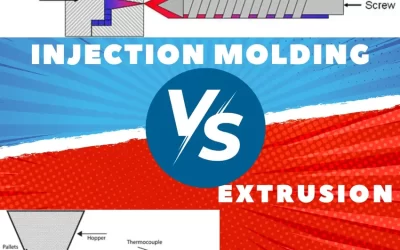
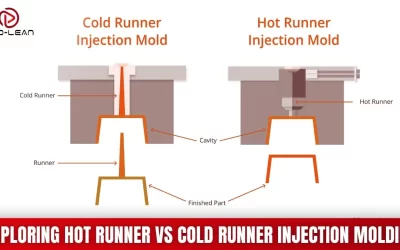
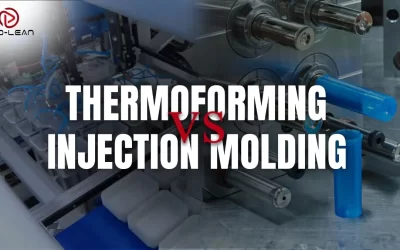
Great! Our Start-up is looking for aluminum molds for plastic parts? How much volume can it produce? Tentatively
Aluminum molds can produce up to 10,000 cycles. But, it can be increased under special considerations, such as maintenance and proper tooling